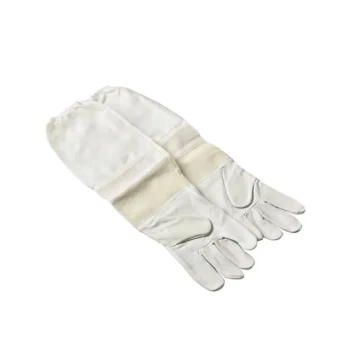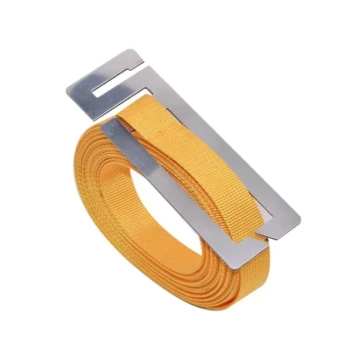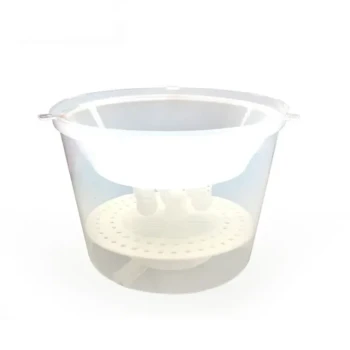The fit of your beekeeping gloves is the single most important factor determining your effectiveness and safety while working with a hive. The ideal fit is a precise balance: the glove must be snug enough to grant you dexterity and prevent bees from entering, yet not so tight that it restricts movement or causes discomfort. A properly fitted glove feels like a secure second skin, allowing you to work confidently without accidentally harming your bees or yourself.
Choosing the right glove is about more than just avoiding stings; it's about enabling good beekeeping. The correct fit directly impacts your ability to handle bees gently, manipulate frames precisely, and work efficiently, ultimately defining your confidence and competence as a beekeeper.
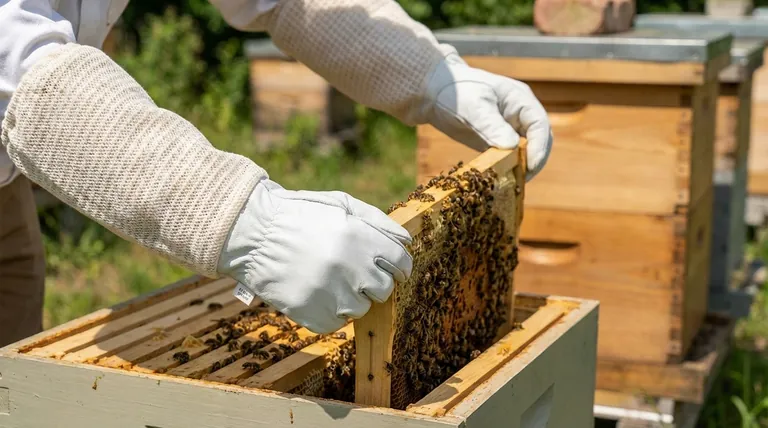
The Core Principles of a Proper Fit
The difference between a helpful glove and a hazardous one lies in a few key details. Understanding these principles is the first step toward selecting the right equipment.
The 'Snug, Not Tight' Rule
A snug fit means the glove material lies flat against your skin with no excess fabric bunching at the fingertips or palm. This is critical for preventing the material from catching on hive components or accidentally crushing bees.
However, the glove should not be tight. A tight fit will restrict blood circulation, limit your finger flexibility, and can become very uncomfortable during longer inspections.
Maximizing Dexterity
Beekeeping requires fine motor skills, from lifting a single frame to inspecting a queen cell. A well-fitted glove allows you to feel what you are doing and handle tools with precision.
If your glove is too loose or bulky, you lose this tactile feedback, increasing the risk of dropping a frame or damaging delicate honeycomb.
Ensuring Complete Coverage
Proper fit extends beyond the hand. The glove's cuff must provide full coverage of your wrist and overlap securely with your beesuit.
Look for gloves with a long cuff and a strong elastic seal. This is your primary defense against a curious bee crawling inside the glove, which is a common and unpleasant cause of stings.
How Fit Impacts Bee and Beekeeper Safety
A poor fit doesn't just make your job harder—it introduces real risks for both you and the colony.
Preventing Stings
The most obvious function of a glove is protection. A secure fit, especially at the cuff, creates an impenetrable barrier. A loose or short cuff is an open invitation for a bee to find its way to your skin.
Protecting Your Bees
This is a critical and often overlooked aspect of glove fit. Excess material from a loose-fitting glove can easily crush bees when you grip a frame or move components within the hive.
Good beekeeping is gentle beekeeping. A snug glove allows you to work carefully and minimize harm to the colony, reducing defensive behavior and ensuring the hive remains calm.
Understanding the Trade-offs: Material and Dexterity
The material of your glove is inseparable from its fit and function. Each option presents a different set of trade-offs between protection and dexterity.
Thick Leather (e.g., Cowhide)
These gloves offer maximum protection from stings but are often stiff and bulky. Achieving a truly snug fit can be difficult, and they significantly reduce your ability to feel what you're doing. They are best for aggressive hives or tasks that don't require fine manipulation.
Goatskin
Goatskin is the most common material for a reason. It provides an excellent balance between protection and flexibility. A well-fitted goatskin glove is pliable, allowing for good dexterity while still being highly resistant to stings.
Nitrile or Latex (Disposable)
These gloves offer the highest level of dexterity, allowing you to feel every detail. However, they provide minimal protection from stings and offer no forearm coverage on their own. They are typically used only by experienced beekeepers for very delicate tasks.
Making the Right Choice for Your Goal
Your choice should align directly with your comfort level, the temperament of your bees, and the specific work you are doing.
- If your primary focus is maximum protection and confidence: Choose a well-fitted goatskin glove with a long, elasticated cuff for a secure seal.
- If your primary focus is dexterity for delicate tasks: Consider wearing thin nitrile gloves, but fully understand the significantly higher risk of stings and lack of wrist protection.
- If you are a new beekeeper: Start with goatskin gloves, as they provide the best all-around balance of safety and function needed to build good habits.
Ultimately, the best glove is one that allows you to work calmly and confidently, ensuring the safety of both you and your bees.
Summary Table:
| Key Consideration | Why It Matters | Ideal Fit |
|---|---|---|
| Snugness | Prevents bee entry & fabric bunching | Snug, not tight; like a second skin |
| Dexterity | Enables precise frame & tool handling | Allows fine motor skills and tactile feel |
| Cuff Coverage | Seals wrist; blocks bee access | Long cuff with strong elastic seal |
| Material Choice | Balances protection and flexibility | Goatskin for best all-around performance |
Protect your hands and your hive with perfectly fitted beekeeping gloves from HONESTBEE.
As a trusted supplier for commercial apiaries and beekeeping equipment distributors, we understand that the right glove is essential for efficient, safe, and gentle beekeeping. Our wholesale-focused operations ensure you get high-quality, durable gloves that provide the ideal balance of protection and dexterity.
Ready to equip your team with gloves that enhance confidence and competence?
Contact HONESTBEE today to discuss your bulk supply needs and discover how our equipment supports successful, large-scale beekeeping operations.
Visual Guide
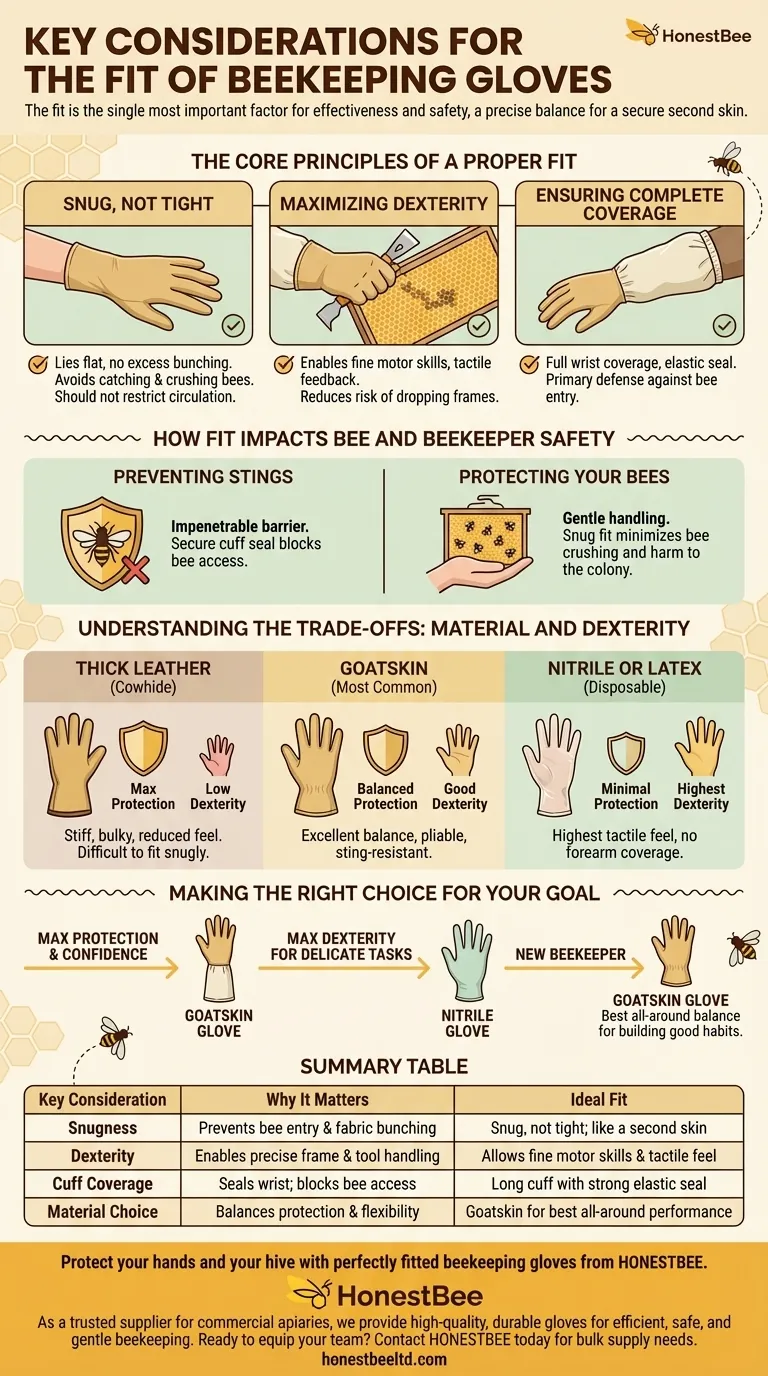
Related Products
- Mesh Ventilated 3 Layer Goatskin Beekeepers Gloves for Beekeeping
- Goatskin Leather Beekeeper Gloves with Vent Long Sleeve for Beekeeping Honey Bee Sting Proof Protection
- Goat Skin Leather Bee Sting Proof Beekeeping Gloves with Canvas Sleeve
- Professional Drop-Style Hive Handles for Beekeeping
- HONESTBEE Professional Long Handled Hive Tool with Precision Cutting Blade
People Also Ask
- Why is it important to have gloves available even if not always worn? Essential Risk Management for Beekeepers
- What factors should be considered when selecting beekeeping gloves? Balance Protection and Dexterity
- What is the recommendation for beginning beekeepers regarding gloves? Build Confidence and Safety
- How do beekeeping gloves increase comfort during long sessions? Enhance Focus and Reduce Fatigue
- Why do some beekeepers choose not to wear protective gear? Experience vs. Dexterity in Hive Management

